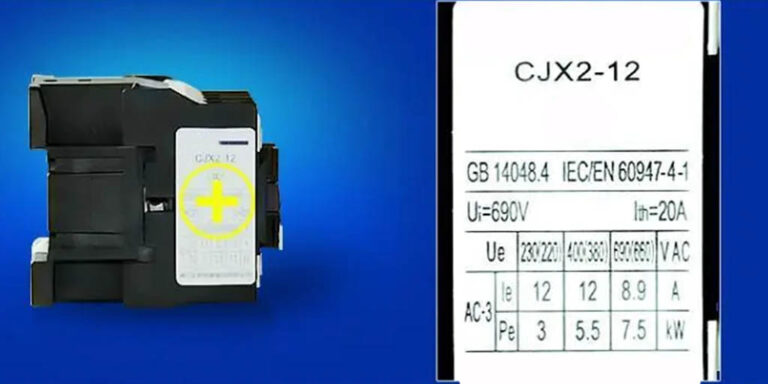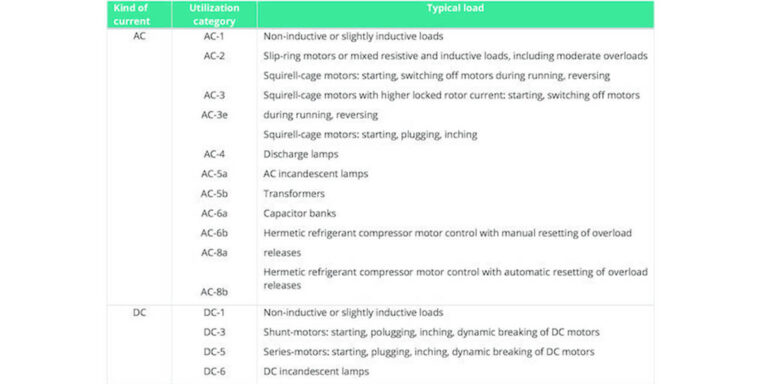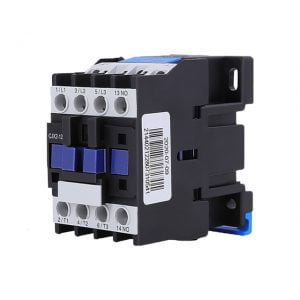In the power world, contactors are a critical device that play an important role in switching, controlling and protecting circuits. As an electrical component, the main function of a contactor is to connect or interrupt the path of current in a circuit. The application of contactors almost lays the foundation for electrical technology. Therefore, a correct understanding of the use of contactors is an essential skill for every electrical worker.
-
CJX2 series AC contactor
Accessories
Table of Contents
Contactor applications

In industry, contactors are often used to control equipment such as electric motors, lighting systems, heating units, and fans. Through the action of the contactor, these equipment can be started, stopped, adjusted and protected. In addition, the application of contactors in power systems is also very important. They are used to control and protect generators, transformers, capacitors and distribution equipment to ensure the safe operation of the power system. It is also widely used in construction, transportation, agriculture and other fields.
Working principle of a contactor

A contactor is an electromagnetic switching device whose working principle is based on the magnetic effect of electric current. It consists of a coil and movable contacts (main and auxiliary contacts). The basic function of the AC contactor: After the AC contactor coil is energized, the main contact is closed and the main circuit is connected. The normally open point of the auxiliary contact is closed and the normally closed point is opened. On the contrary, when the current flowing through the coil stops, the magnetic field disappears, the contacts are reset under the action of the spring. The main contact returns to normal open, the auxiliary normally open contact returns to normally open, and the auxiliary normally closed returns to normally closed. This magnetic effect of electric current pull-in and release operation enables the contactor to control the opening and closing of the circuit.
Contactor model explanation
It is very important for an electrical worker to understand the contactor model. By understanding the model and specifications of the contactor, we can better choose according to actual needs and ensure the safe and stable operation of the circuit. At the same time, it can also better conduct troubleshooting and maintenance, improve work efficiency, and reduce the occurrence of safety accidents.
For example, the CJX2 contactor is a common AC contactor model with reliability and stability and a wide range of applications. Important parameters of this type of contactor include rated voltage, rated current, rated power and rated insulation voltage.
CJX2 contactor parameters explanation

(1) Rated voltage Ue refers to the rated power supply voltage at which the contactor can work normally. According to different power systems and national standards, the rated voltage of CJX2 contactors can be selected from a variety of options, such as 220V, 380V, 660V, etc.
(2) Rated current Ie refers to the maximum current value that the contactor can withstand when working normally under the conditions corresponding to Ue and use category. This parameter needs to be selected according to the controlled load current to ensure that the contactor can work stably and reliably.
(3) Rated power Pe refers to the maximum load power that the contactor can control under the conditions corresponding to Ue and usage category. Based on the power requirements of the controlled load, selecting an appropriate power rating can ensure that the contactor can work properly and prevent overload operation.
(4) Rated insulation voltage Ui refers to the maximum insulation voltage that the contactor can withstand. It reflects the electrical isolation performance between the internal electrical components of the contactor, ensuring that electrical breakdown and electric shock hazards will not occur during work.
(5) Heating current Ith refers to the current allowed to pass through the contactor on an 8-hour working day when the contactor is used. This current is usually larger than the rated current of the contactor to ensure that the contactor will not overheat during normal operation, thus ensuring the life and safety of the contactor. That is the maximum current that the limit can withstand.
In addition to these parameters, the front model of CJX2 contactor CJX2-1810 indicates that 18 is the rated current, the 1 in front of 10 indicates the auxiliary is normally open contacts.
How to judge the quality of a contactor

As a user, judging the quality of a contactor mainly depends on the following aspects:
- Reliability: A good contactor should have high reliability and be able to work stably and withstand long-term use. This is important. On-site stability is greater than other aspects. It should have good contact performance to ensure the accuracy and stability of circuit switching. CJX2 contactors use high-quality materials and precision manufacturing processes to ensure reliable product quality and stable performance.
- Durability: The contactor should have good durability under frequent switching operations, be able to withstand high loads and current shocks, and reduce contact wear and increase in contact resistance. CJX2 contactors have long mechanical life and electrical life, and can withstand frequent switching operations and high load environments.
- Safety: The contactor should have good insulation performance and protection function to ensure that arc, electric shock or other safety hazards will not occur during operation. CJX2 contactor provides good insulation performance and protection function, and is more suitable for harsh environments, ensuring user safety and reliable operation of equipment.
- Adaptability: A good contactor should have a wide range of applications and be able to adapt to different load types and environmental conditions. It should be able to operate stably and reliably under various working conditions and adapt to different electrical control needs. CJX2 contactors have a wide range of models and can be selected as needed. They are suitable for many fields, such as industry, construction, transportation, etc., and can meet various load control needs.
By choosing CJX2 contactors, users can obtain high quality, durability, safety and reliability while meeting diverse application needs. This makes CJX2 contactor the first choice product trusted and chosen by many users.
How to choose a contactor
Determine the rated parameters of the contactor based on the controlled object and operating parameters, such as voltage, current, power, frequency, etc. The specific criteria for selecting contactors vary depending on the load type and working environment. The following are some common selection criteria for reference:
(1) Select AC or DC contactor: AC contactors should be used to control AC loads, and DC contactors should be used for DC loads. When the DC motor and DC load capacity are small, AC contactor control can also be used, but the rated current of the contacts should be appropriately selected to be larger.
(2) Choosing the contactor type: The type of contactor needs to be selected according to the type of load. The commonly used load type is AC-3 three-phase asynchronous motor starting and breaking.

(3) Calculate the rated current: The rated operating current of the main contact of the contactor is the current value that can work normally under specified conditions (rated operating voltage, usage category, operating frequency, etc.). When the actual use conditions are different, this current value will also vary. change. For example, the use category is a three-phase resistive load (heating rod), and the contactor’s agreed heating current Ith is selected based on 1.2 times the load current. If it is an inductive load (motor), the contactor AC-3 rated current Ie is selected based on 1 to 3 times the load current.
(4)Determine the rated voltage: The rated operating voltage of the main contact should be greater than or equal to the voltage of the load circuit.
(5) Determine coil voltage: The rated voltage of the coil should be consistent with the control circuit voltage. Try to use low voltage, so that the insulation requirements of the contactor can be reduced and it is safer to use.
(6)Confirm auxiliary contact: The number and type of auxiliary contacts of the contactor should meet the requirements of the control circuit.
Conclusion
As a key electrical control device, contactor has a wide range of applications. It plays an important role in various fields such as industry, construction, transportation, energy, etc. The correct selection of suitable contactors is crucial to the normal operation and safety of electrical control systems.
During the selection process, factors such as load type, current demand, contact material, rated voltage, environmental conditions, etc. should be comprehensively considered, and the specification sheets and technical guidelines provided by the manufacturer should be referred to to ensure that a suitable contactor is selected to improve system performance and reliability. Mastering the basic knowledge of contactors is an essential life skill for every electrical worker.
Lorentzzi® can supply all kinds of AC contactors with the best quality and moderate prices, contact us today to get a discounts.







